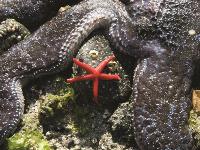Stewardship is the care of the land, air, water, and biodiversity that surrounds and sustains us. Through big and small actions, we all have a role to play as stewards in the capital region. This section describes stewardship actions that you can take to protect our natural ecosystems. 
Stewardship is at the core of the UN Decade on Ecological Restoration, which runs 2021-2030. This proclamation is a rallying call for the protection and revival of ecosystems all around the world, for the benefit of humanity and nature. Over the course of this decade, people around the world will work together to prevent, halt and reverse the degradation of ecosystems on every continent and in every ocean.
In Greater Victoria, partners are supporting the UN Decade by working together to respond to the growing need for ecological restoration within our region. Led by the University of Victoria, local partners will collaborate regionally on a collective push to raise awareness of ecosystem restoration in our region, and will support hands-on action by regional agencies and residents.
You can use resources and content within this section to learn more about how to support ecological restoration and stewardship across the capital region.